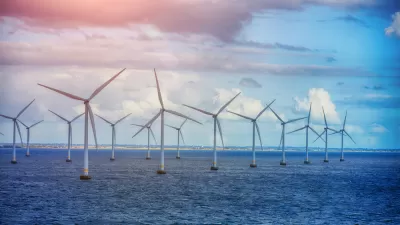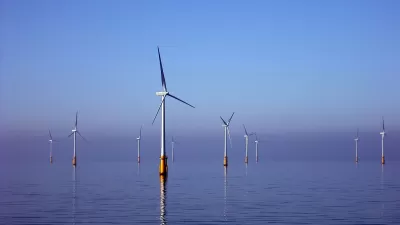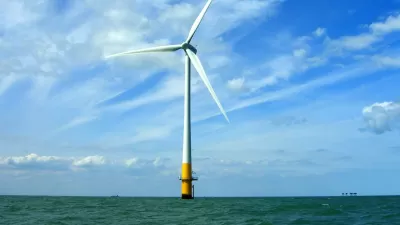Unique geography and high costs have stymied offshore wind energy production in California, but new incentives and innovations could soon make it more accessible.

Writing in the OC Register, Brooke Staggs describes the potential of offshore wind energy in the United States and, specifically, California, where offshore wind production has been held back by geography, among other factors.
“But with wind power now seen as key to helping both California and the U.S. meet their clean energy goals, new state and federal programs are focused on helping us push past those obstacles and become a leader in the offshore wind front,” Staggs writes. “In August, the California Energy Commission set goals of installing offshore wind projects that could generate 2,000 to 5,000 megawatts by 2030 and 25,000 megawatts by 2045. That would be enough electricity to power 3.75 million homes over the next seven years and 25 million homes by mid-century.”
The article describes the challenges of installing offshore wind turbines in the deep waters off the California coast, which require floating installations rather than turbines anchored to the sea floor, making it more expensive. California’s situation is complicated by the vast amounts of coastline controlled by the Department of Defense, which are currently off limits to wind energy projects. But with technology rapidly improving and incentives from the federal government adding a boost, offshore wind energy along the West Coast could soon be a reality. “[T]wo areas off the coast of Humboldt and three areas near Morro Bay, totalling a combined 373,000 acres, have so far been identified as prime floating wind farm locations. If fully developed, the projects could generate 4,500 megawatts of electricity, or enough power for 1.5 million homes.”
FULL STORY: Floating wind turbines off California coast soon could boost power grid

Planetizen Federal Action Tracker
A weekly monitor of how Trump’s orders and actions are impacting planners and planning in America.

Chicago’s Ghost Rails
Just beneath the surface of the modern city lie the remnants of its expansive early 20th-century streetcar system.

San Antonio and Austin are Fusing Into one Massive Megaregion
The region spanning the two central Texas cities is growing fast, posing challenges for local infrastructure and water supplies.

Since Zion's Shuttles Went Electric “The Smog is Gone”
Visitors to Zion National Park can enjoy the canyon via the nation’s first fully electric park shuttle system.

Trump Distributing DOT Safety Funds at 1/10 Rate of Biden
Funds for Safe Streets and other transportation safety and equity programs are being held up by administrative reviews and conflicts with the Trump administration’s priorities.

German Cities Subsidize Taxis for Women Amid Wave of Violence
Free or low-cost taxi rides can help women navigate cities more safely, but critics say the programs don't address the root causes of violence against women.
Urban Design for Planners 1: Software Tools
This six-course series explores essential urban design concepts using open source software and equips planners with the tools they need to participate fully in the urban design process.
Planning for Universal Design
Learn the tools for implementing Universal Design in planning regulations.
planning NEXT
Appalachian Highlands Housing Partners
Mpact (founded as Rail~Volution)
City of Camden Redevelopment Agency
City of Astoria
City of Portland
City of Laramie





























